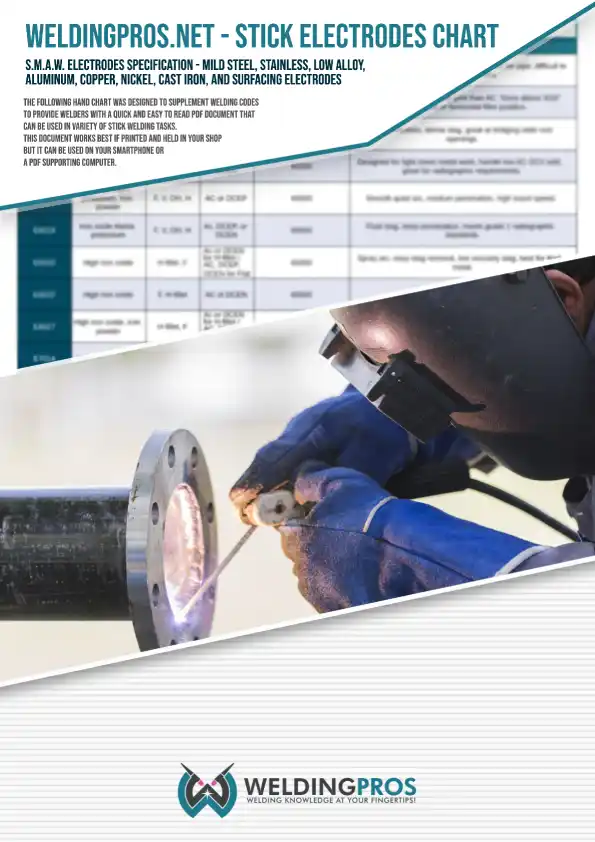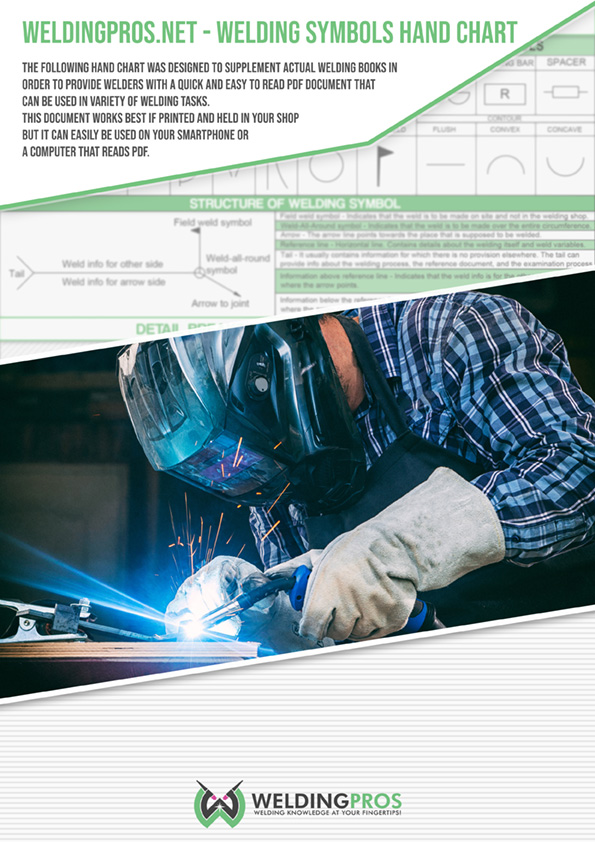White metals are a series of metals usually described as light-color alloys. White metals are often used as a base for plated silverware, ornaments, and some lead-based or tin-based alloys. In most cases, one can see it on some jewelry, door handles, fusible plugs, and miniature figures.
![White Metal Welding Guide - How to Weld White Metal, Tips and Tricks [2025] 1 White Metal Welding feature image](https://weldingpros.net/wp-content/uploads/2021/03/White-Metal-Welding.jpg)
But how does one weld white metal?
Welding white metal is not the most common process and not used that often. Welders that do know fall in this niche market, make extra money, and are harder to replace. Two most essential reasons to soak up all you can on how to weld these alloys.
Let’s go.
What Are White Metals?
White metal, also called pot metal, is an aluminum-based or low-temperature zinc-based alloy with small percentages of copper, tin, or magnesium added to achieve the necessary properties. Aluminum alloys come with relatively high temperatures and possess better mechanical properties compared to zinc-based alloys.
Based on the basic composition, there are three classes of pot metal – zinc, aluminum, and magnesium. The one used the most is the zinc-alloy kind, which has a melting point of up to 725ºF (385ºC).
What’s The Common Use of White Metal?
White metals have many uses. You will usually find it in decorative pieces, ornaments, and novelty items. It is not uncommon to find it in jewelry as well, both the expensive and inexpensive kinds. Additionally, pot metal can be used in creating or making repairs to figurines, medals, metallic hangings, wall arts, or plaques. It is also used as a casting form for die-castings or in metal sheets used as a roofing material.
What Is The Composition of White Metals?
White metal in most cases contains antimony, tin, cadmium, zinc, lead, bismuth, aluminum, or magnesium.
Unfortunately, some of these types of metals are toxic in nature which will disqualify them from being used as pot metal.
Even though the most commonly used ones are magnesium, aluminum, and zinc alloy, they still need to be mixed with other types of metals in order to achieve the properties intended for their use.
![White Metal Welding Guide - How to Weld White Metal, Tips and Tricks [2025] 2 image of chess pieces made of white metals](https://weldingpros.net/wp-content/uploads/2021/03/chess-4753300_1920-e1615916681767.jpg)
Zinc alloys are used the most because they are low temperatures with low melting points. Cast zinc and rolled zinc are the two most commonly used types for welding. As for cast aluminum alloys, they usually add small parts of other metals like zinc, silicon, magnesium, and manganese. This is done so it improves their engineering properties.
Properties of White Metals
The main characteristics of pot metal are that it has a high friction coefficient, it is ductile and soft but very tough. Its intermetallic compound is hard but brittle and wear-resistant. This makes them not suitable for bearing materials.
Mechanical properties of pot metal:
- Brittle at room temperatures and require higher temperatures for improved mechanical working.
- Light.
- Before doing any spot welding, the metal surface may require mechanically abraded cleaning.
- Wear-resistant.
- Compared to steel it possesses higher electrical and thermal conductivity but a lower melting point.
- Shock-resistant.
- A low friction-coefficient.
- Tough but sufficiently ductile
Good Things about White Metals
The white metal is beneficial for production for many reasons. Firstly, it is inexpensive, lowering the cost of raw materials, making the products affordable for everyone. Secondly, they are easy to shape and work with, allowing anyone to make very interesting pieces from them or easily repair them.
Welding White Metals (How To Weld Zinc)
Pot metal is cheap to use but is a bit hard to weld. Due to its inferior structure and low melting point, operators can find it troublesome to weld these types of metal.
Since these types of metals contain a variety of metals within them, it depends on which one is the dominant form.
![White Metal Welding Guide - How to Weld White Metal, Tips and Tricks [2025] 3 image of white metals welding](https://weldingpros.net/wp-content/uploads/2021/03/man-6022977_1920-e1615916362393.jpg)
Most white metals contain either zinc or aluminum, so one has to approach them as welding these types of materials. However, even then it could be hard as it may be troublesome to identify its melting point. A welder can easily mess everything up if they are not careful enough. Cast aluminum allows are much easier to weld as proposed to zinc alloys, particularly when it comes to TIG welding. One of the main issues is choosing the correct welding rods.
There are some types of welding electrodes that are specifically created for pot metal, JB weld type being the most popular ones, but even then it is not certain that you are going to have positive results. Some people agree that when you want to repair a crack, it is better to use a pot metal restoration kit instead of welding it. A good method is cleaning the weld area putting some bevel and applying some epoxy on the crack.
But if you still decide to weld it, here are some useful tips that you need to follow.
Adjusting Your Flame
Make sure to adjust your welding flame to carburizing. But be careful as no soot should be deposited on the welded links. The oxyacetylene flame or plasma can be very hot for pot metal, so a smaller tip is more appropriate. Low-temperature soldering or a superalloy might also work.
If you are using a torch, one needs to be really careful as the spelter can heat up and melt the solder. A good practice is to do a trial run on a broken statue or some other useless piece.
Choosing the Right Rod (Zinc Welding Rods)
Welding rods for a stick welder for pot metal are usually made out of pure zinc. Also, a die-casting alloy made out of similar metal that you are planning to weld could also be used. Rods for pot metal can also come with a small metal flux, 50% of zinc chloride and 50% of ammonium chloride. JB weld ones are viewed as the most appropriate ones.
White Metal Welding Technique
When you need to weld pot metal parts, a lot of people simply cross their fingers and hope it sticks. Since it is an inferior form of metal, most people simply apply a pot metal restoration kit instead of welding it. Also, it is mainly used to create castings since it is a cheap form of metal.
If you do decide to do it, it is best to heat up the casting part until the base metal liquefies. The flame should be turned in a parallel direction towards the surface. That way, both the base metal and the rod attain the same temperatures keeping the metal soft.
Resistance Welding of Zinc Alloys
Resistance welding pot metal is used with rolled alloys because it has the least heat input compared to the gas and arc welding process. Additionally, it also provides sound walls.
Spot welding is usually done on lap joints or flanges. The overlap size will depend on the thickness of the metal sheet. Be sure to degrease and clean the working area before you start to weld.
Resistance Welding Zinc Application
Resistance welding solid zinc is done with currents that are equivalent to low electrode forces and steel. Cavities and internal defects can easily be seen but can be diminished with the help of a forging force.
The same parameters for cast zinc cast alloys can be used as with rolled alloys. It is a good practice to remove the extra coatings that casings usually come with.
Summing Things Up
As you can see, white metals or pot metals are highly used in today’s industry. It can be a little tricky to repair or weld but if you apply the proper technique you are not going to have any problems.
Sources:
- White metal welding discussion on Miller Weld forums: https://forum.millerwelds.com/forum/welding-discussions/30643-cast-aluminum-or-pig-iron
- More about white metal welding on Hobart forums: https://weldtalk.hobartwelders.com/forum/weld-talk-topic-archive/welding-processes/7319-what-is-white-metal
- More discussions on forums: https://www.garagejournal.com/forum/showthread.php?t=4309





